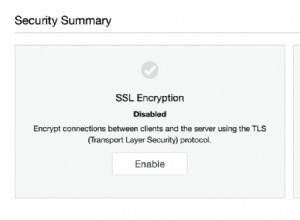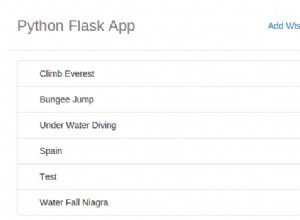Um das Ergebnis zu erhalten, müssen Sie die Daten in Total entpivotieren und Volume Spalten zuerst, bevor Sie die PIVOT-Funktion anwenden, um das Endergebnis zu erhalten. Mein Vorschlag wäre, zuerst eine hartcodierte Version der Abfrage zu schreiben und sie dann in dynamisches SQL umzuwandeln.
Der UNPIVOT-Prozess wandelt diese mehreren Spalten in Zeilen um. Es gibt mehrere Möglichkeiten zum UNPIVOT, Sie können die UNPIVOT-Funktion verwenden oder Sie können CROSS APPLY verwenden. Der Code zum Entpivotieren der Daten sieht ähnlich aus wie:
select id,
col = cast(t_year as varchar(4))+'_'+t_type+'_'+col,
value
from ATM_TRANSACTIONS t
cross apply
(
select 'total', total union all
select 'volume', volume
) c (col, value);
Dadurch erhalten Sie Daten im Format:
+-----+---------------+-------+
| id | col | value |
+-----+---------------+-------+
| DD1 | 2008_A_total | 1000 |
| DD1 | 2008_A_volume | 10 |
| DD1 | 2008_B_total | 2000 |
| DD1 | 2008_B_volume | 20 |
| DD1 | 2008_C_total | 3000 |
| DD1 | 2008_C_volume | 30 |
+-----+---------------+-------+
Dann können Sie die PIVOT-Funktion anwenden:
select ID,
[2008_A_total], [2008_A_volume], [2008_B_total], [2008_B_volume],
[2008_C_total], [2008_C_volume], [2009_A_total], [2009_A_volume]
from
(
select id,
col = cast(t_year as varchar(4))+'_'+t_type+'_'+col,
value
from ATM_TRANSACTIONS t
cross apply
(
select 'total', total union all
select 'volume', volume
) c (col, value)
) d
pivot
(
max(value)
for col in ([2008_A_total], [2008_A_volume], [2008_B_total], [2008_B_volume],
[2008_C_total], [2008_C_volume], [2009_A_total], [2009_A_volume])
) piv;
Nachdem Sie nun die richtige Logik haben, können Sie diese in dynamisches SQL umwandeln:
DECLARE @cols AS NVARCHAR(MAX),
@query AS NVARCHAR(MAX)
select @cols = STUFF((SELECT ',' + QUOTENAME(cast(t_year as varchar(4))+'_'+t_type+'_'+col)
from ATM_TRANSACTIONS t
cross apply
(
select 'total', 1 union all
select 'volume', 2
) c (col, so)
group by col, so, T_TYPE, T_YEAR
order by T_YEAR, T_TYPE, so
FOR XML PATH(''), TYPE
).value('.', 'NVARCHAR(MAX)')
,1,1,'')
set @query = 'SELECT id,' + @cols + '
from
(
select id,
col = cast(t_year as varchar(4))+''_''+t_type+''_''+col,
value
from ATM_TRANSACTIONS t
cross apply
(
select ''total'', total union all
select ''volume'', volume
) c (col, value)
) x
pivot
(
max(value)
for col in (' + @cols + ')
) p '
execute sp_executesql @query;
Dies gibt Ihnen ein Ergebnis:
+-----+--------------+---------------+--------------+---------------+--------------+---------------+--------------+---------------+--------------+---------------+--------------+---------------+
| id | 2008_A_total | 2008_A_volume | 2008_B_total | 2008_B_volume | 2008_C_total | 2008_C_volume | 2009_A_total | 2009_A_volume | 2009_B_total | 2009_B_volume | 2009_C_total | 2009_C_volume |
+-----+--------------+---------------+--------------+---------------+--------------+---------------+--------------+---------------+--------------+---------------+--------------+---------------+
| DD1 | 1000 | 10 | 2000 | 20 | 3000 | 30 | 4000 | 40 | 5000 | 50 | 6000 | 60 |
| DD2 | 7000 | 70 | 8000 | 80 | 9000 | 90 | 10000 | 100 | 11000 | 110 | 1200 | 120 |
+-----+--------------+---------------+--------------+---------------+--------------+---------------+--------------+---------------+--------------+---------------+--------------+---------------+




